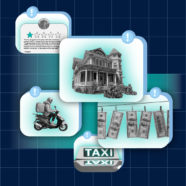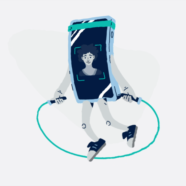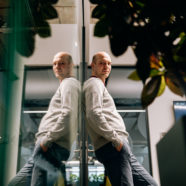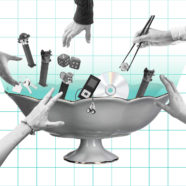- #all
- #banking
- #biometrics
- #business
- #culture
- #digital identity
- #elections
- #ethics
- #facial recognition
- #fingerprint recognition
- #government
- #iris recognition
- #NIST
- #onboarding
- #online elections
- #technology
- #UX
- #voice recognition

How eKYC can make sharing economy apps safer
Mandatory in highly regulated fields like banking and communications, the Know Your Customer (KYC) process is a crucial part of onboarding for many companies. But would it also enhance trust on sharing economy platforms? We explore how electronic KYC that uses biometrics would make it easy, effortless and safe for both platforms and users.

Digital anthropologist Giles Crouch: “We use verifiable identities in the real world, it should be the same in the digital one.”
A Identity is a fuzzy thing. It is constantly changing as we grow up: child, student, parent, worker… each time we join different social groups in our lives, we find ourselves with a new kind of identity. And with technology, identity is no longer restricted to the offline world. So what does it mean, to have a digital identity? And why do we need to have a system to verify it? about culture, technology and identities – real and digital ones.

Verified social media: How can biometrics tame hate, hoaxes and fraud caused by anonymity?
Today's easy anonymity on social media creates an open avenue for scammers, cheaters and bots. Could biometric verification be the way to make these platforms friendlier and more “social” again? We explore the topic with Ján Lunter, CEO of Innovatrics, who thinks biometrics is key to social media security and safety.

Five threats in sharing economy apps and how biometrics could help fight back
Sharing economy platforms such as Uber or Airbnb should always have control over who is using the platform and how. However, in some cases, fraudsters and criminals are able to take advantage of sharing economy services and put the safety of users and the reputation of the platforms at serious risk. Read about five threats and scams that have occurred on sharing economy platforms and how the use of biometric technology could have prevented them.

VR travel, space data or energy: how far can the sharing economy go?
Luxurious cars, electric bikes, or extravagant vacation homes – thanks to the sharing economy, you can have all these things without “having” any of them. But how far can this trend stretch? Let’s explore how the sharing economy will shape industries in the coming years.

How biometric identity verification protects passengers using
ride-hailing apps
To get home one night, you order a taxi through a ride-hailing app. You don’t check who your driver is because you don’t have to. With driver face verification and liveness check algorithms, you know that the ride-hailing app continuously verifies thousands of drivers, making all the rides you take safe.

From sci-fi to reality:
How biometrics has travelled through movie screens and into our daily lives
How well did sci-fi movies of the past predict the biometric technologies that are now a reality, and which sci-fi concepts have remained fiction?

“Thanks to powerful servers, training a face recognition algorithm now takes just ten days instead of a year,” says R&D lead Jakub Sochor
For decades, fingerprint recognition has been the holy grail of secure biometric authentication. Yet, with the rapid progression and widespread acceptance of facial recognition, is there a new frontrunner?

“When companies seek biometric services, it shows responsibility and care,” says remote identity verification expert
The pandemic kickstarted the use of biometrics. Solutions like remote identity verification made it easier for major companies to operate, and since then, this technology has become widespread, especially in areas like the sharing economy.

Carpooling in wartime
and spare air mattresses:
a visual history
of the sharing economy
From gathering food around a tribal fire to downloading popular MP3 songs in the late 1990s, sharing is something humans have always done. Join us on a visual journey through the decentralised economy and discover how technology has revolutionised the way we share – disrupting both industries and society in the last few decades.








